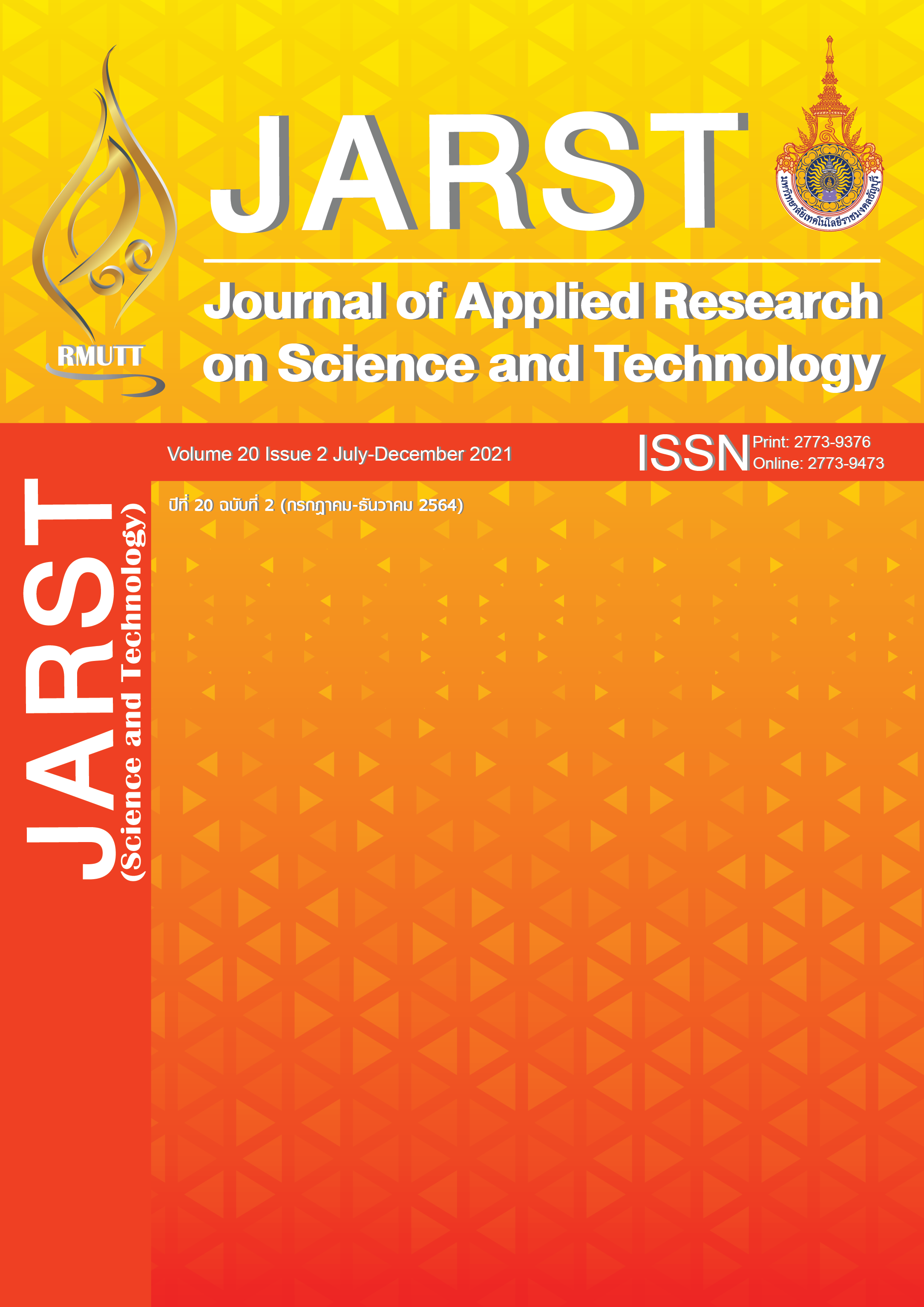Study of Heat Transfer Throughout the Inverse Temperature Phenomena
Main Article Content
Abstract
This research aimed to study the behavior of heat transfer. And heat in the inverse temperature phenomenon in which the problem of pollution and there are various toxins mixed in the air that are created by humans and nature. Because humans need to breathe. And unable to separate toxins from the air Thus making the process of breathing automatically bring toxins into the body Therefore, this research is to study computer simulations to study heat transfer. And heat during inverse temperature phenomena. To study and explain the models, behavior, diffusion, concentration of toxic substances that are affected by variables in the equation such as temperature, convection temperature. Flow velocity and the concentration of toxic substances. By using a model and analyzed with four basic equations: 1. Equation of continuity 2. Momentum equation 3. Energy conservation equation 4. Diffusion equation of substance concentration Using a computer program numerical solution based on finite element methodology. From the study, it is found that the air temperature in high altitude areas. This is an important variable indicating the effect of toxic substance concentration distribution. Therefore, the concentration of toxic substances in the second case and the second case is the second level. In this study, the results showed that the concentrations of toxic substances were lower, so new fish were more likely to be contaminated. The results of this study can explain the two phenomena. Case study of inversion of 1 layer by temperature, the results show that the accumulation of sulfur dioxide is less than two opposite temperatures.
Article Details

This work is licensed under a Creative Commons Attribution-NonCommercial-NoDerivatives 4.0 International License.
References
Costa LG, Cole TB, Dao K, Chang Y, Garrick JM. Developmental impact of air pollution on brain function. Neurochemistry International (NCI). 2019;131:104580.
Singh A, Pant P, Pope FD. Air quality during and after festivals. Atmos Res. 2019;227:220-32.
Shendell D. Community outdoor air quality: sources, exposure agents and health outcomes. Encyclopedia of Environmental Health. 2011;791-805.
Li Y, Yan J, Sui X. Tropospheric temperature inversion over central China. Atmos Res. 2012;116:105-15.
Geng L, Wu Z, Zhang S, Zhou K. The end effect in air pollution: The role of perceived difference. J Environ Manage. 2019;232:413-20.
Xu T, Song Y, Liu M, Cai X, Zhang H, Guo J, et al. Temperature inversions in severe polluted days derived from radiosonde data in North China from 2011 to 2016. Sci Total Environ. 2019;647:1011-20.
Zang Z, Wang W, You W, Li Y, Ye F, Wang C. Estimating ground-level PM 2.5 concentrations in Beijing, China using aerosol optical depth and parameters of the temperature inversion layer. Sci Total Environ. 2017;575:1219-27.
Ganbat G, Baik J. Wintertime winds in and around the Ulaanbaatar metropolitan area in the presence of a temperature inversion. The Asia-Pacific Journal of Atmospheric Sciences (APJAS). 2016;52:309–25.
Zhang Z, Li Y. Near-surface temperature inversion over the east china sea. Earth and Environmental Science. 2020;531:012048.
Milionis AE, Davies TD. Regression and stochastic models for air pollution-II. Application of stochastic models to examine the links between ground-level smoke concentrations and temperature inversions. Atmos Environ. 1994;28:2811-2822.
Santiago JL, Buccolieri R, Rivas E, Calvete-Sogo H, Sanchez B, Martilli A, et al. CFD modelling of vegetation barrier effects on the reduction of traffic-related pollutant concentration in an avenue of Pamplona, Spain. Sustain Cities Soc. 2019;48:101559.
Abed B, Benzerdjeb A, Hamidou M. A numerical analysis on the effect of turbulent schmidt number on numerical prediction of pollutant dispersion within street canyons. The Eurasia Proceedings of Science Technology Engineering and Mathematics. 2018:(4):230–40.
Jouberta P, Quéréb PL, Bégheina C, Collignanc B, Couturierc S, Glocknerd S, et al. A numerical exercise for turbulent natural convection and pollutant diffusion in a two-dimensional partially partitioned cavity. INT J Therm Sci. 2005;44(4):311-22.
Yuan Y, Yang K, Du C, Fu X. Study on Schmidt number of pollutant diffusion in urban street atmosphere: Procedia Engineer. 2017;205:1711-17.
Fish BR, Durham JL. Diffusion coefficient of SO2 in air. Environ Lett. 1971;2(1):13-21.

